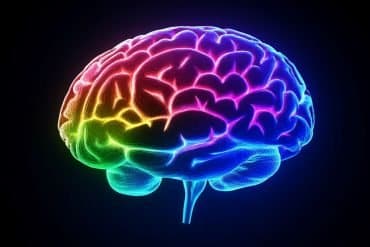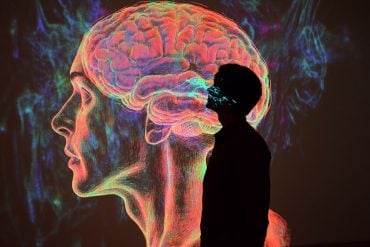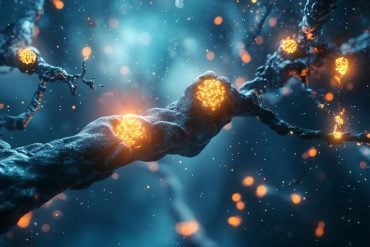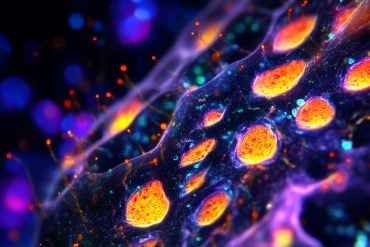Summary: Both the orthonasal and retronasal routes, in addition to our taste buds, shape our taste perception of foods.
Source: Yale
There are a few ways we perceive food, and not all are particularly well-understood. We know that much of it happens in the olfactory bulb, a small lump of tissue between the eyes and behind the nose, but how the stimuli arrive at this part of the brain is still being worked out.
How these stimuli are processed in the brain plays a major role in our daily life. Fully understanding how our perceptions of food are formed is critical, Fahmeed Hyder said, but getting a clear picture of what our brains do when we smell has been tricky.
“Knowing which exact pathways are affected and teaching our brain to appreciate and acknowledge both modes of perception in understanding the flavor is a part of our culture that we haven’t fully exploited yet,” he said. A better understanding of how smells get to our brain would not only tell us a lot about our eating habits, he said, it could even potentially help patients of certain diseases.
Hyder, professor of biomedical engineering and radiology & biomedical imaging, has taken a detailed look at the function of the olfactory bulb. It may not be one of the most talked-about regions of the brain, but it helps us make sense of the outside world by taking in molecules from food — known as food volatiles — and then sending these signals further into the brain. It serves a pivotal role as the gateway for chemical stimuli to the rest of the brain — specifically the piriform cortex, amygdala, and hippocampus. To see exactly how it does that, Hyder and his team mapped the activity in the entire olfactory bulb. It’s the first time that this has ever been done for the two independent routes of odor delivery — that is, the orthonasal and retronasal routes.
The results were published in NeuroImage.

The orthonasal route — one pathway odors take to the brain — is what we typically think of as smelling, when food volatiles or odor molecules enter the nasal cavity through inhalation. The other — the retronasal route — is more associated with eating, when food volatiles are released in the mouth while we chew and these odor molecules pass into the nasal cavity. Both of these routes, along with the flavors we pick up with the taste buds on our tongues, shape our perceptions of food. Professors Gordon Shepherd and Justus Verhagen, Yale collaborators in this study, have worked on comparing these routes of odor delivery before.
Among other discoveries in their recent work, Hyder and his team found that, regardless of the odor, responses to the stimuli traveling through the orthonasal route were much stronger than those that took the retronasal route. And while the brain responses in the two routes were similar in many ways, the orthonasal maps were dominant in some parts of the bulb, while the retronasal maps were dominant in others. Scientists hadn’t observed these differences before, mainly because of the limitations of the standard imaging tools for this kind of research.
About this taste perception research news
Source: Yale
Contact: William Weir – Yale
Image: The image is credited to Yale
Original Research: Open access.
“Orthonasal versus retronasal glomerular activity in rat olfactory bulb by fMRI” by Fahmeed Hyder et al. NeuroImage
Abstract
Orthonasal versus retronasal glomerular activity in rat olfactory bulb by fMRI
Odorants can reach olfactory receptor neurons (ORNs) by two routes: orthonasally, when volatiles enter the nasal cavity during inhalation/sniffing, and retronasally, when food volatiles released in the mouth pass into the nasal cavity during exhalation/eating.
Previous work in humans has shown that both delivery routes of the same odorant can evoke distinct perceptions and patterns of neural responses in the brain. Each delivery route is known to influence specific responses across the dorsal region of the glomerular sheet in the olfactory bulb (OB), but spatial distributions across the entire glomerular sheet throughout the whole OB remain largely unexplored.
We used functional MRI (fMRI) to measure and compare activations across the entire glomerular sheet in rat OB resulting from both orthonasal and retronasal stimulations of the same odors. We observed reproducible fMRI activation maps of the whole OB during both orthonasal and retronasal stimuli. However, retronasal stimuli required double the orthonasal odor concentration for similar response amplitudes.
Regardless, both the magnitude and spatial extent of activity were larger during orthonasal versus retronasal stimuli for the same odor. Orthonasal and retronasal response patterns show overlap as well as some route-specific dominance. Orthonasal maps were dominant in dorsal-medial regions, whereas retronasal maps were dominant in caudal and lateral regions. These different whole OB encodings likely underlie differences in odor perception between these biologically important routes for odorants among mammals.
These results establish the relationships between orthonasal and retronasal odor representations in the rat OB.






